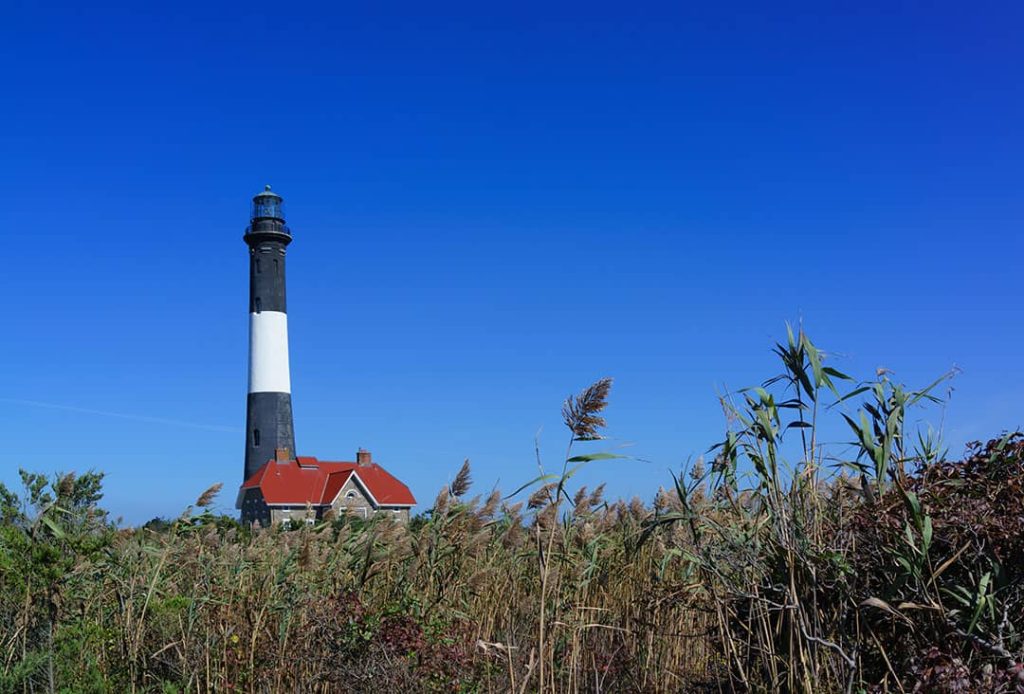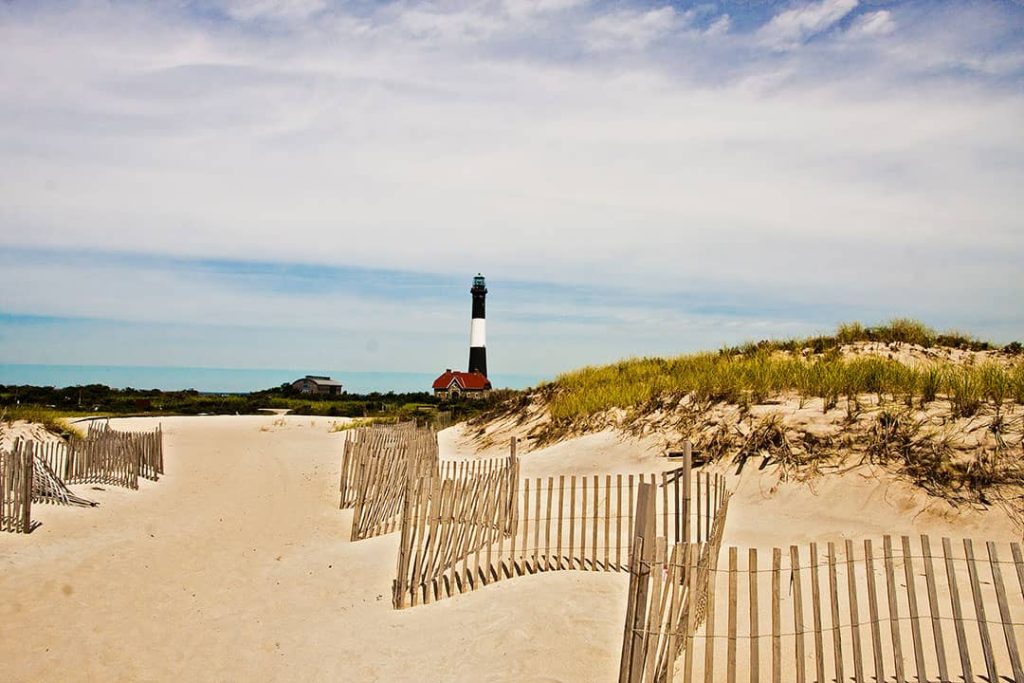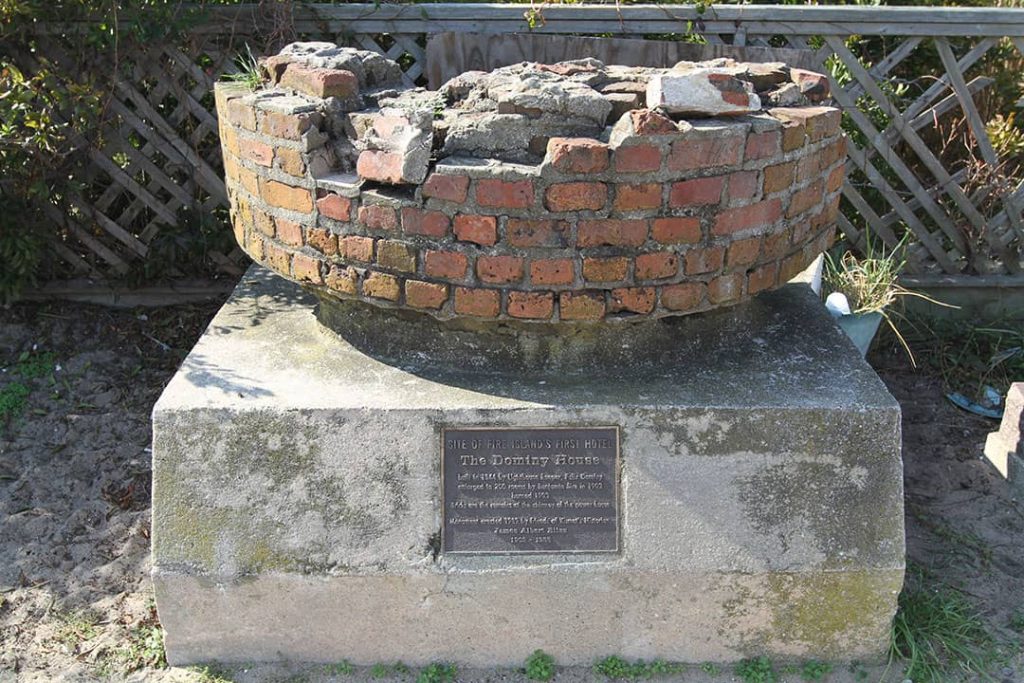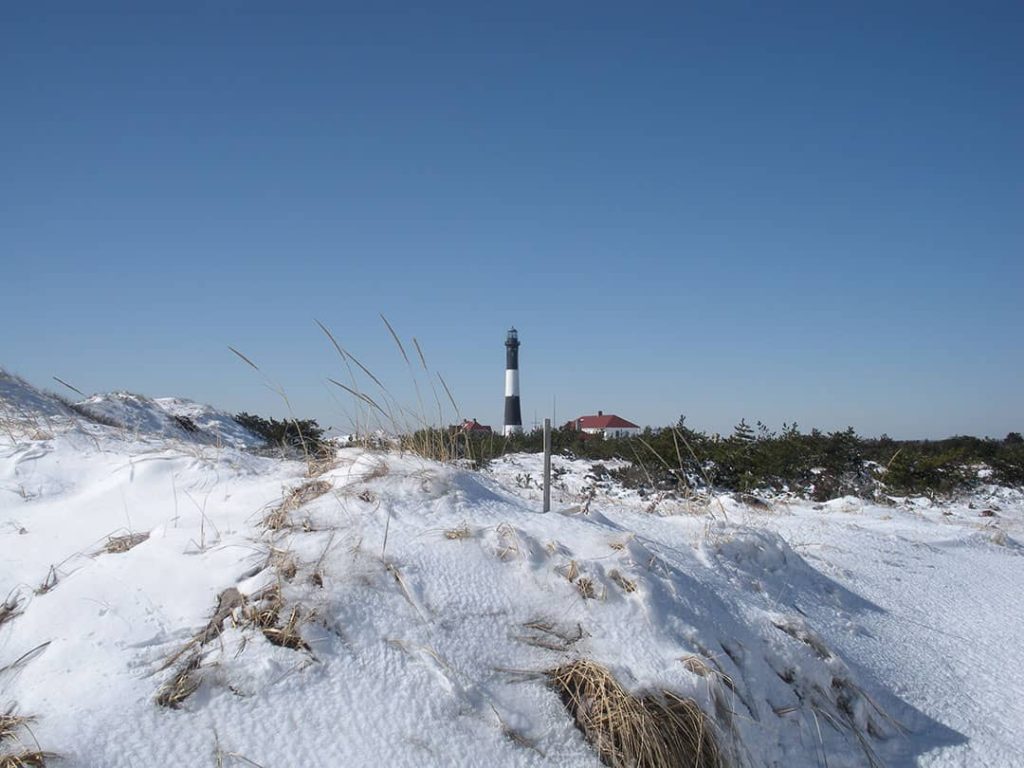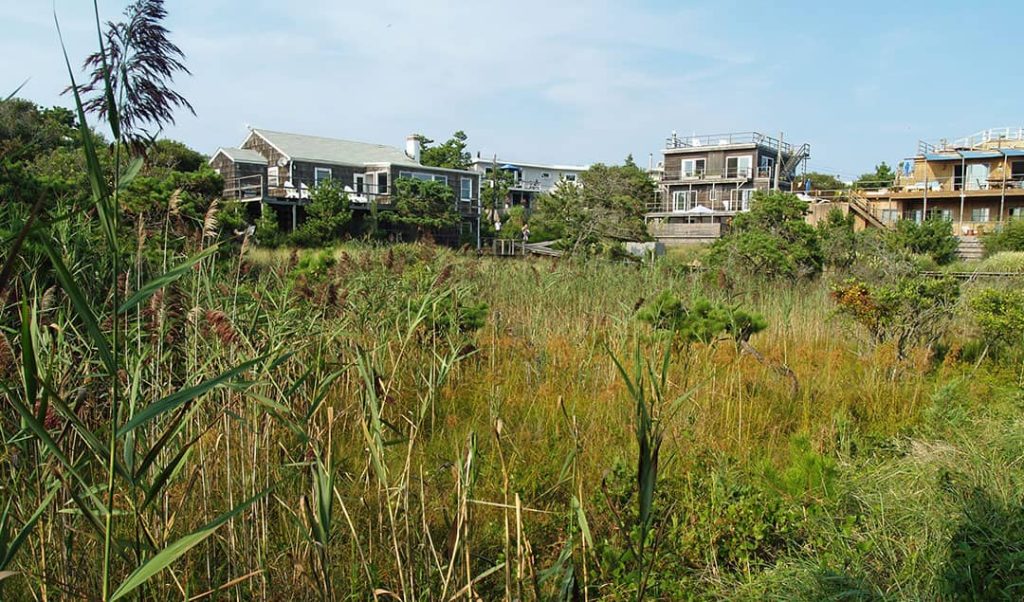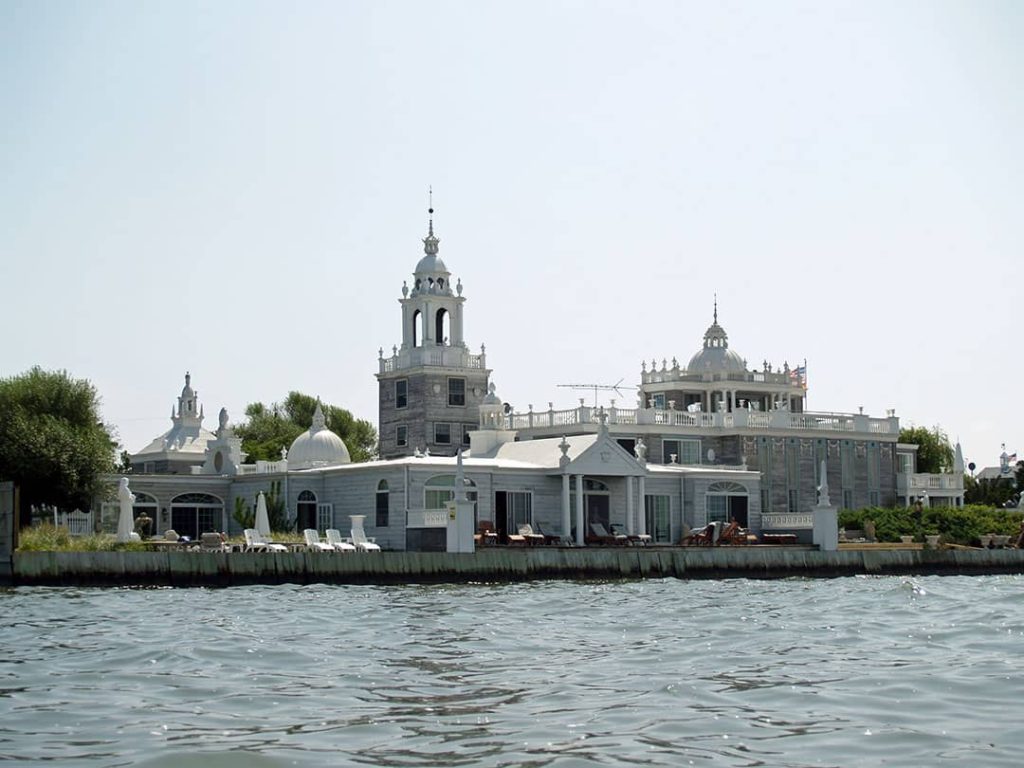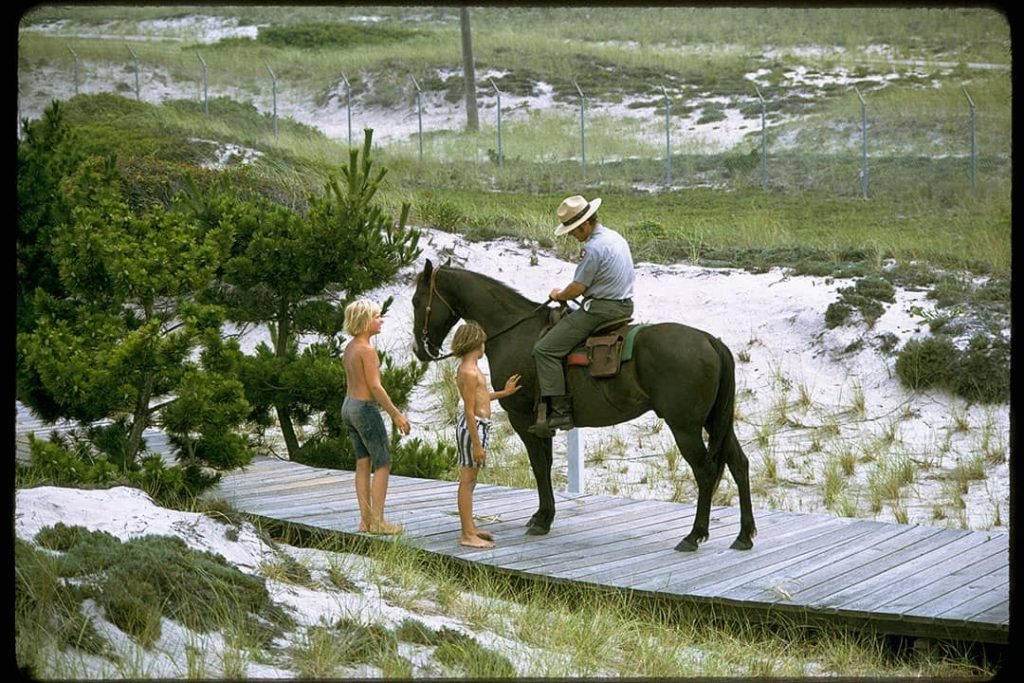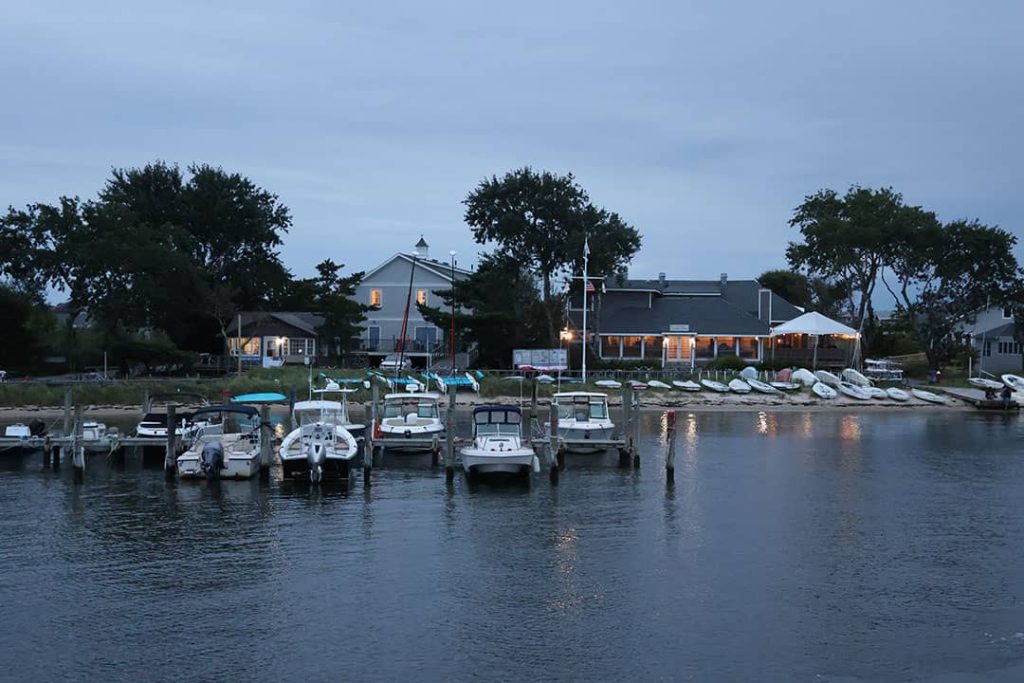New York State Island
Fire Island
Fire Island has been well-known since the 1950s as the gay community’s summer resort of choice. A narrow island in New York State, USA, it is part of a chain of natural barrier islands just off the coast of Long Island, a much larger and better-known island to the immediate east of New York City.
The number of barrier islands off Long Island has varied over time with the natural processes of coastal erosion and deposition. Fire Island itself has been temporarily split into two since 2012 as a result of a powerful hurricane that struck the area that October, Hurricane Sandy, breaching it in three places while causing devastating flooding that destroyed numerous houses. While two of the breaches were artificially filled in by officials immediately following Hurriane Sandy, the third was allowed to persist, but has since narrowed and is expected to close up completely within a few more years.
By 1839, the island had become known on maps as Great South Beach, a name by which it continued to be widely known until the mid-1960s. In 1963, the Board of Geographic Names ruled that both Great South Beach and Fire Island were correct as alternative names for the island, but the establishment of the Fire Island National Seashore in 1964 shifted usage permanently in the direction of the name Fire Island.
Despite measuring only 160 to 400 metres across throughout its 31-mile length, and being periodically prone to violent storm conditions, Fire Island has been inhabited since long before the arrival of modern European settlers in the 16th century. Various indigenous peoples dwelled in villages on the island and hunted whales from it for several hundred years before eventually being forced to move out by the settlers who began to colonise it in the mid-17th century. It was also a popular winter habitat for seals.
A commercial whaling station called Whalehouse Point was established on the island in 1653. In 1688, an indigenous leader named Chief Tobaccus sold the whaling rights to the Town of Brookhaven on Long Island. English settler William Smith (1655-1705), who had been granted a land patent to the Town of Brookhaven, claimed ownership of the whole of Fire Island under the terms of the patent in 1693. But it remained largely unoccupied for the next century until a pirate named Jeremiah Smith built the first substantial modern home there in 1795. He used this as a base from which to lure ships to their doom in order to plunder them. The shallow water off the coast, in combination with the frequently stormy conditions, led to hundreds of sailing ships getting into distress between 1640 and 1825. The island’s first lighthouse was then constructed to protect and warn shipping to keep its distance. It was not entirely effective; and after a high-profile shipwreck of a passenger ship called the Elizabeth in 1850, a larger, improved lighthouse was built in 1858. This second lighthouse remains standing.
The keeper of the first lighthouse, Felix Dominy, ran a small inn together with his wife. Housing developments took off to a greater extent in the mid-19th century. Between 1845 and 1855, developer David Sturgis Sprague Sammis purchased enough shares of the island to claim 120 acres of land, and used it to construct a hotel known as the Surf Hotel, which opened in 1856. The hotel had to be closed during part of the Civil War of the 1860s; and at one point, Sammis had to file for bankruptcy. But the hotel reopened after the war, and continued to be extended. At its fullest extent, it could hold 1500 guests. Masquerade balls were frequently hosted there, and it became a popular holiday destination for wealthy New Yorkers. But by 1892, its popularity had begun to wane, and Sammis, who had reached the age of 74, was eager to sell up. An epidemic of cholera afflicting Europe at the time was perceived as a threat to the health and safety of New Yorkers. The State of New York decided to purchase the hotel and surrounding land from Sammis, allowing him to retire a wealthy man. The authorities repurposed it as a quarantine centre for the occupants of ships arriving from Europe. Once the threat of cholera had passed, attempts were made to reopen the hotel under State ownership, but it was damaged by a storm; and by 1908, it had been dismantled, leaving just the land, which the State decided to repurpose as its first State Park. It is now known as Robert Moses State Park.
In 1878, Fire Island was divided by arbitrators into 78 parcels of privately owned land, in a move known locally as the Great Partition. This opened the way to much further development, including hotels, summer residences, and a fish factory.
Cherry Grove, a piece of land purchased by Archer and Elizabeth Perkinson following the Great Partition, upon which they built a hotel, Perkinson’s Hotel, in 1885, became the island’s first gay community. It thrived from the 1920s onwards, and despite suffering damage in a hurricane in 1938, it remained active, and by the 1950s it had become very popular with the gay community. The hotel itself was purchased in 1938 by entrepreneur Ed Duffy, who changed its name to Duffy’s hotel. Sadly, it was then destroyed by fire in September 1956. But it was rebuilt the following year, reopening as The Grove Hotel; and the community continued to thrive. In 2015, the second hotel was also destroyed by fire. A third hotel was built on the site in 2017.
Starting in 1947, development began to take place on a separate parcel of land known as Fire Island Pines. Here, a local Property Owners’ Association was established in 1953, supporting significant development over the decades to follow. A second gay community has emerged here, centred upon male couples who stay there in the summers.
Celebrity residents of Fire Island have included comedian and actress Fanny Brice (1891-1951), actor Henry Fonda (1905-1982), screenwriter Ring Lardner Jr. (1915-2000), author Herman Wouk (1915-2019), actor and comedian Carl Reiner (1922-2020), novelist Joseph Heller (1923-1999), actor and comedian Mel Brooks (born 1926), writer and poet Frank O’Hara (1926-1966), songwriter and musician John Lennon (1940-1980), and actress and comedian Tina Fey (born 1970).
